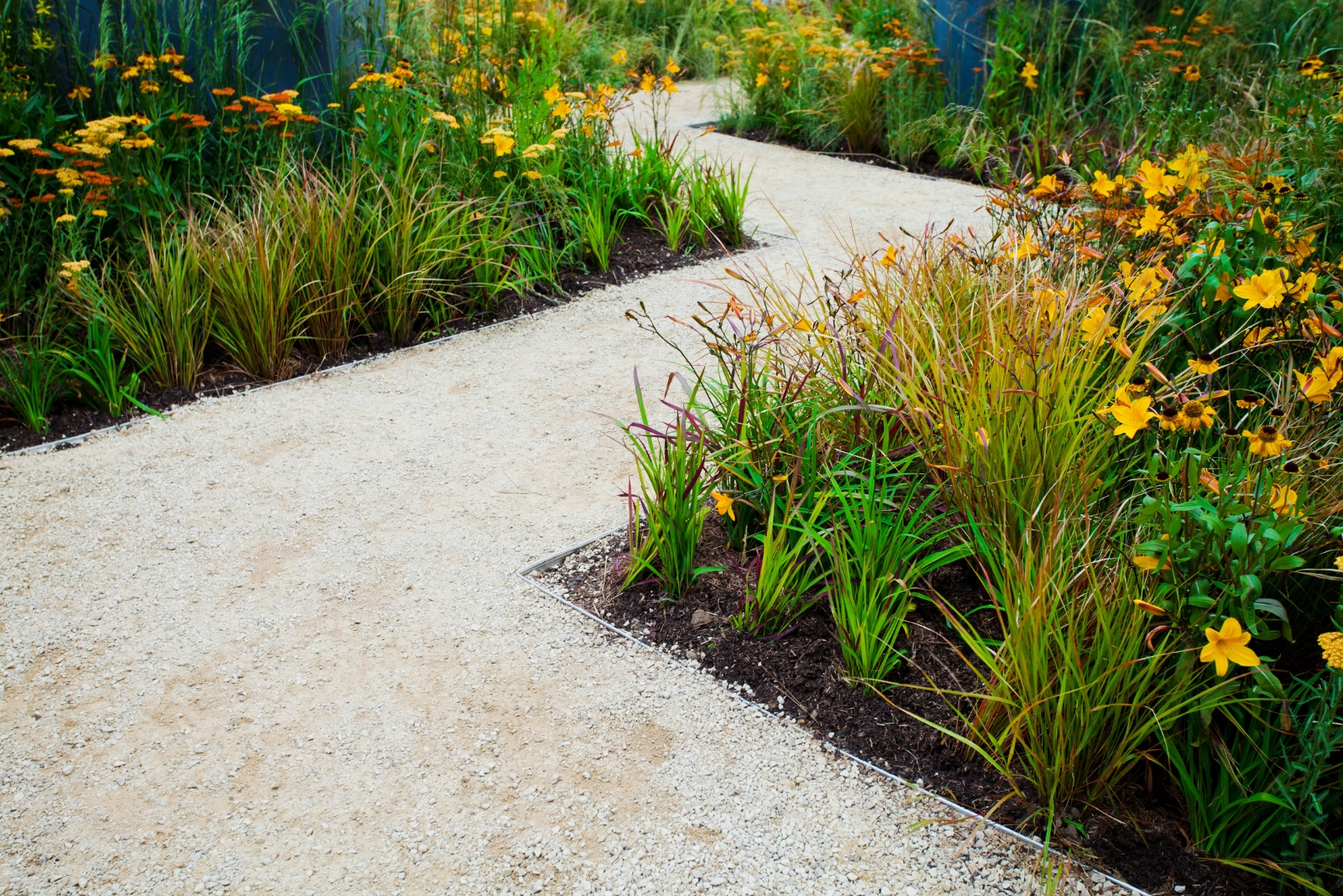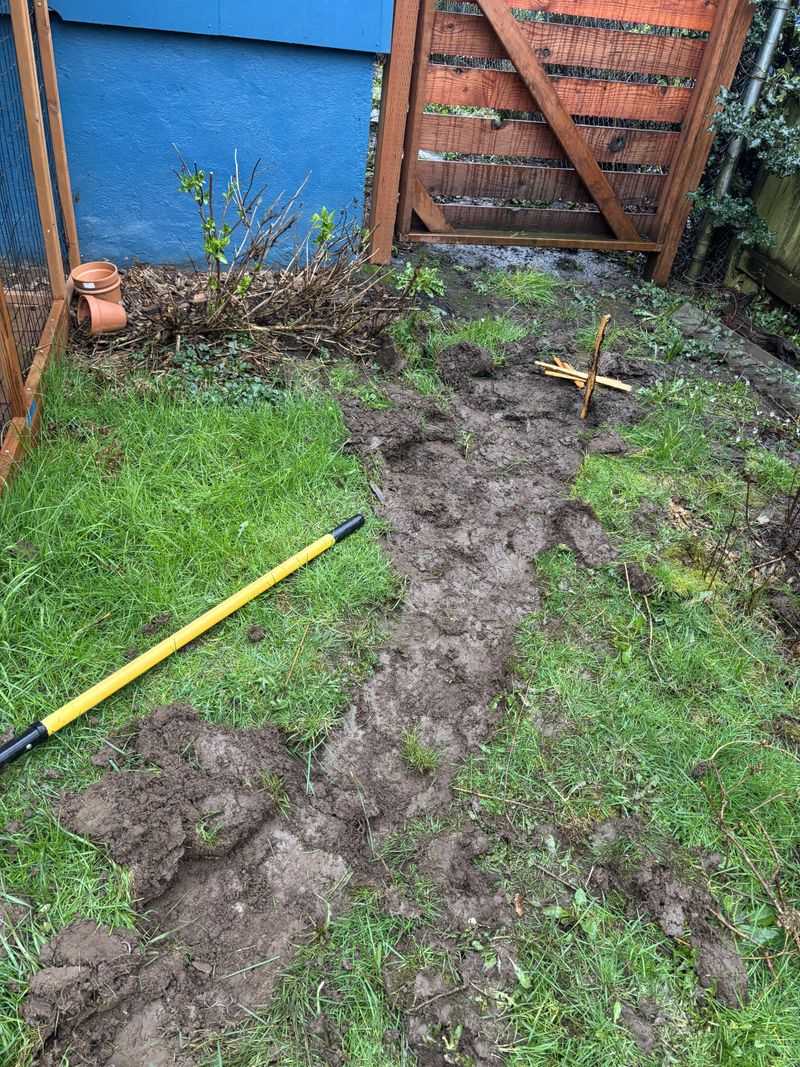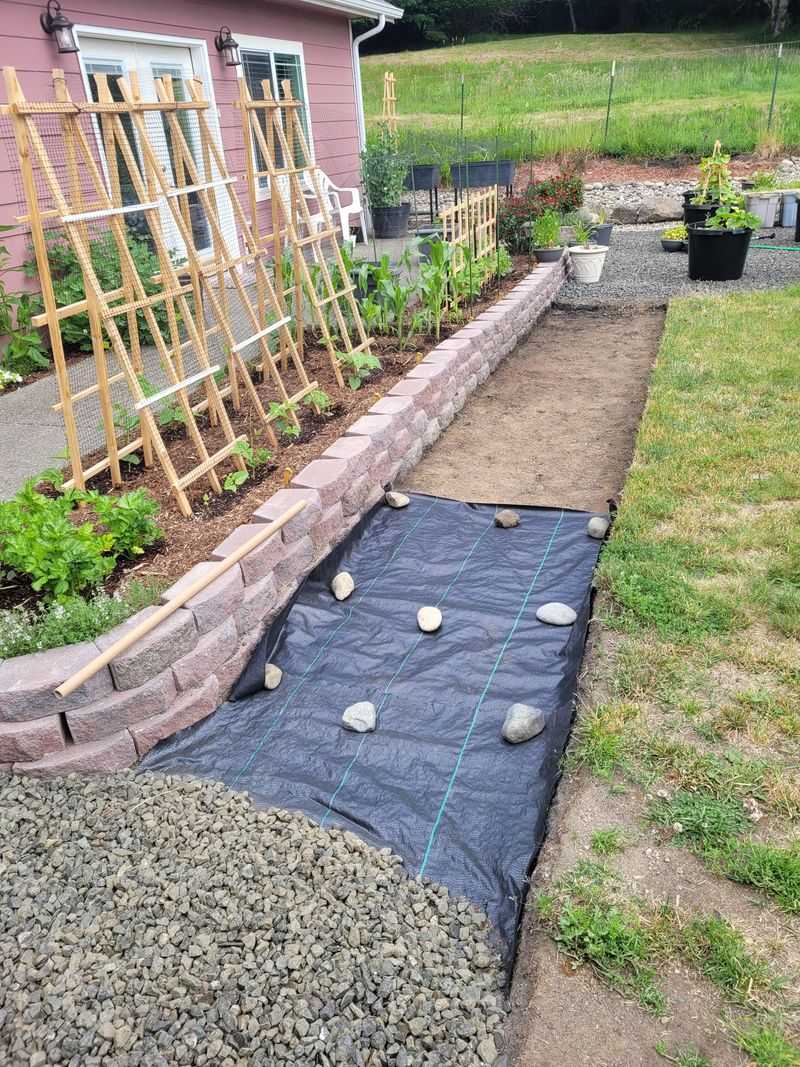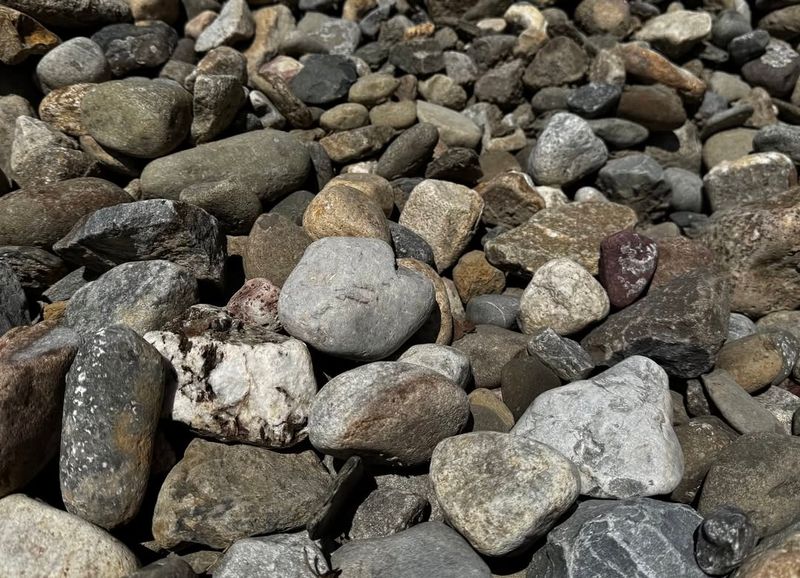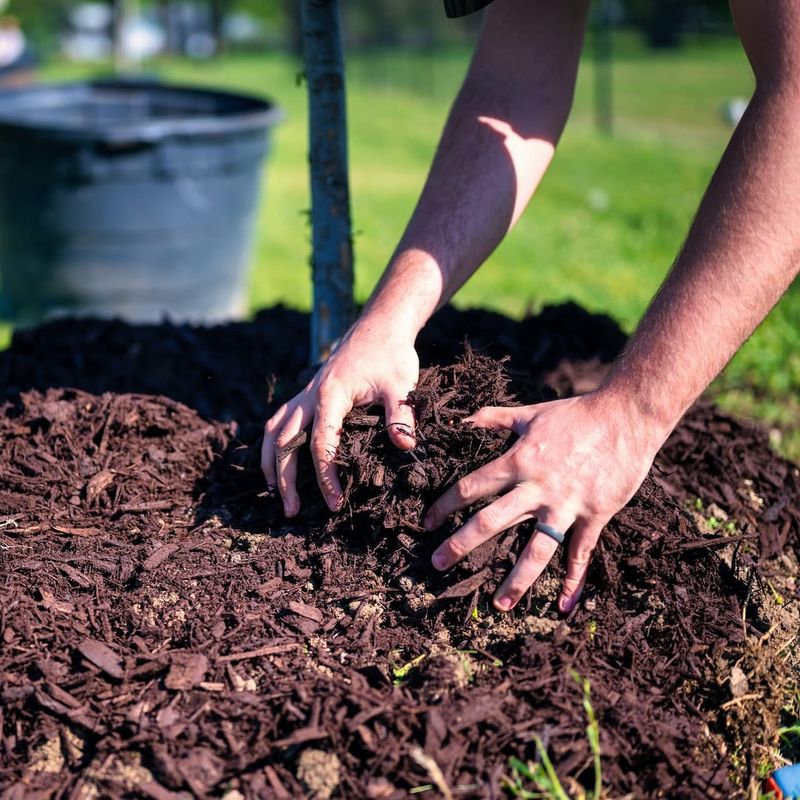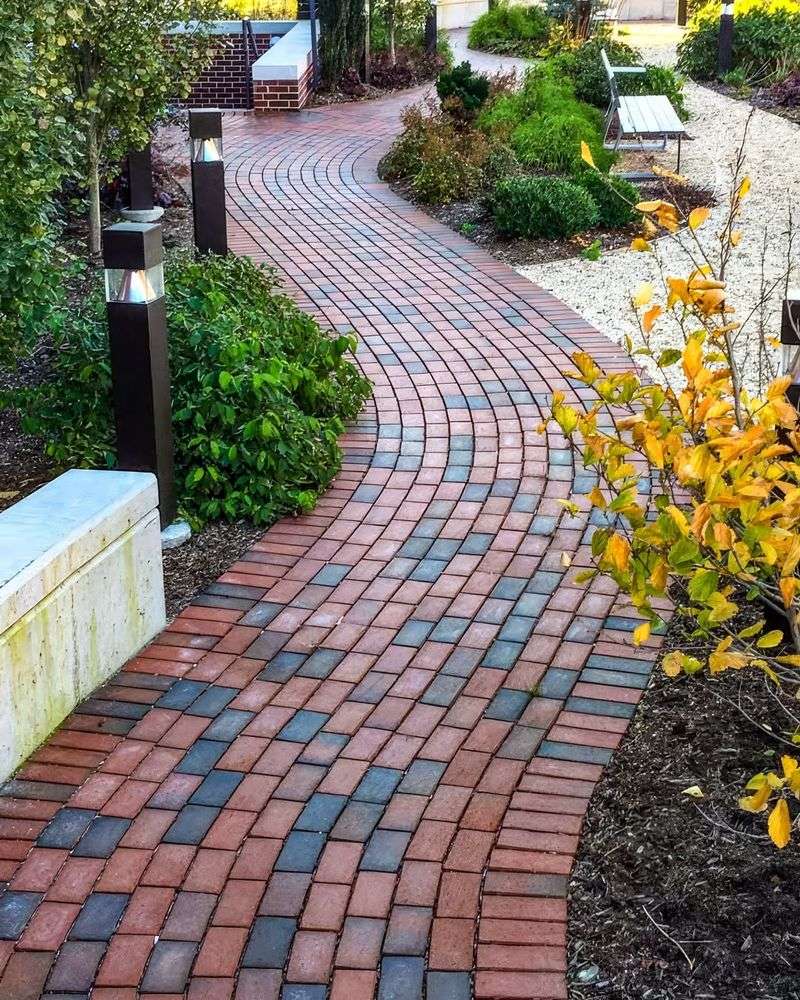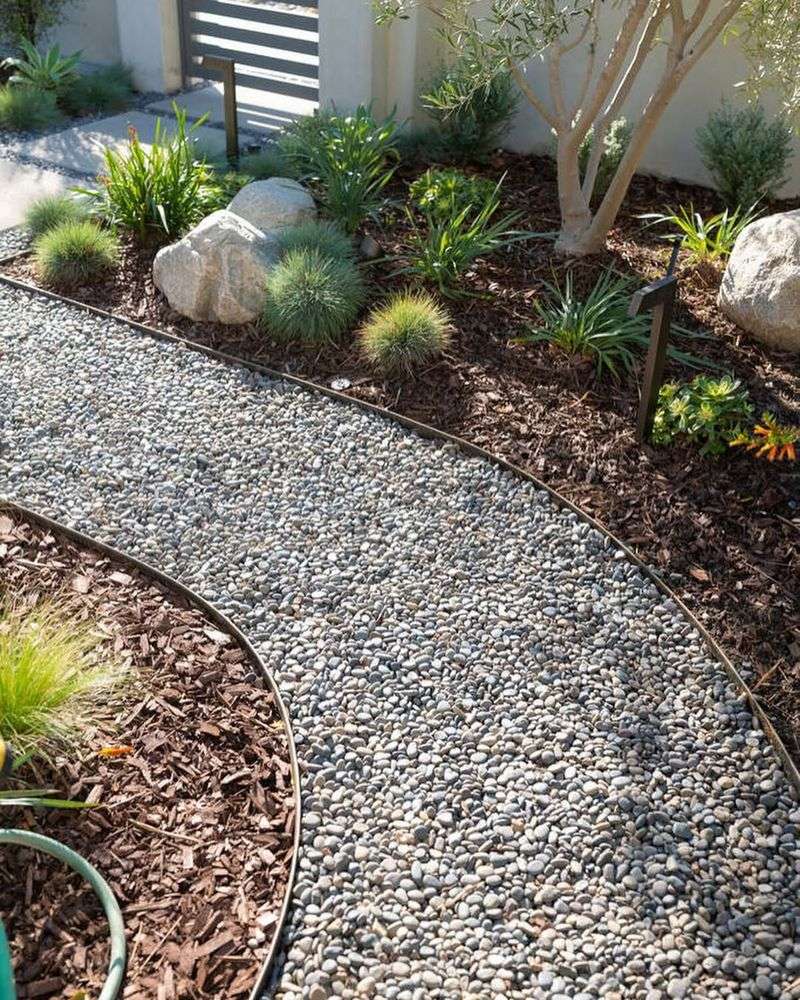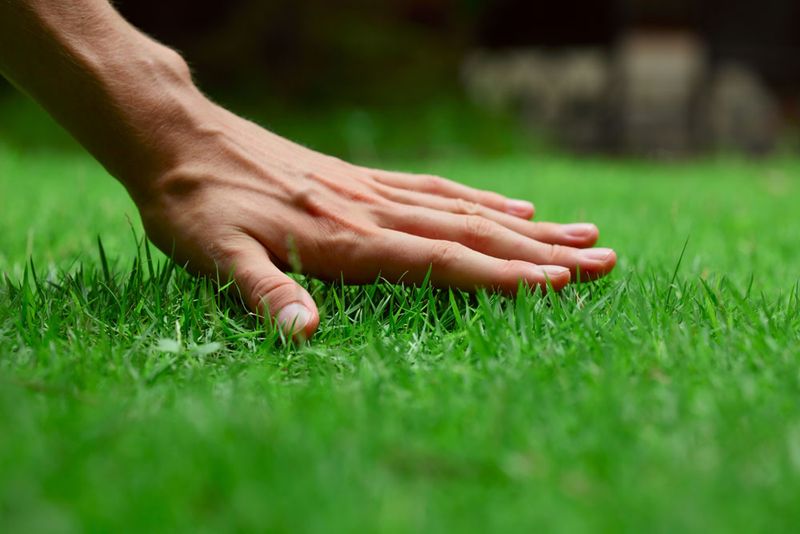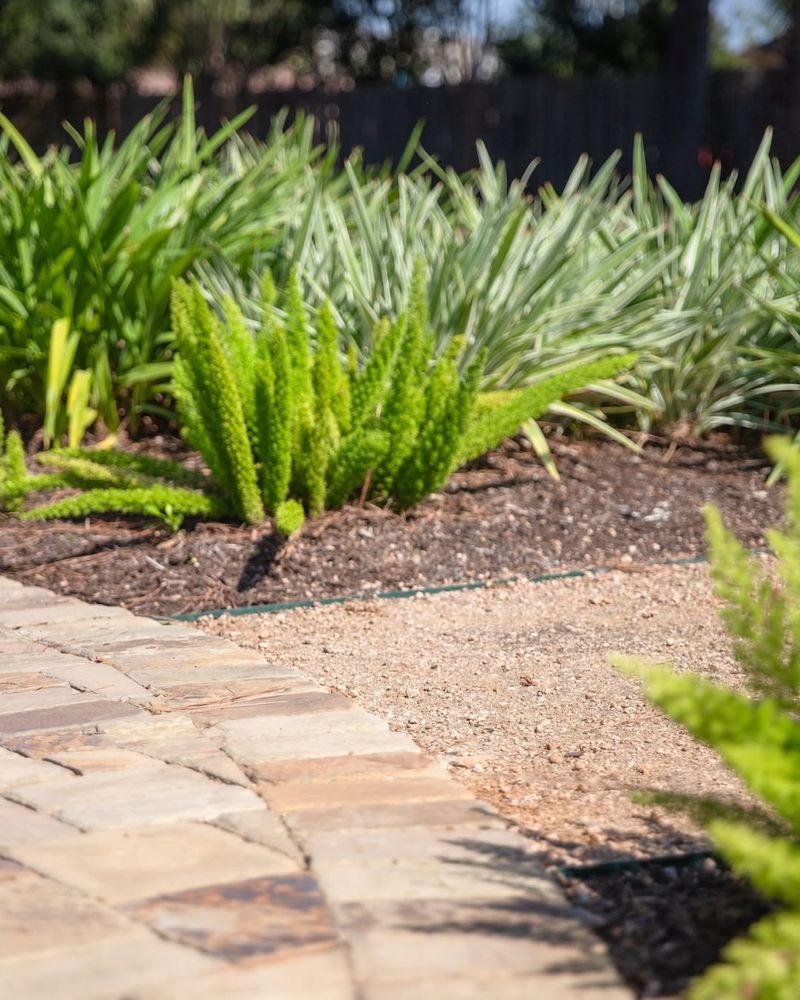Garden paths in Oregon can quickly become overrun with weeds thanks to the state’s rainy climate and long growing season. Keeping these walkways clean and weed-free doesn’t have to be an endless battle if you use the right strategies.
With some smart planning and proper materials, you can enjoy beautiful, low-maintenance paths that stay tidy from spring through fall.
1. Start With Proper Ground Preparation
Clearing the pathway down to bare soil gives you a clean slate to work with. Remove all existing grass, weeds, and their roots using a flat shovel or garden hoe. Dig down about four to six inches to create a shallow trench.
Removing organic matter now prevents future weed problems. Rake the area smooth and level to ensure good drainage. Taking time with this step makes everything else work better and saves you headaches later when weeds try to push through.
2. Install Landscape Fabric As A Barrier
Professional-grade landscape fabric blocks sunlight from reaching weed seeds below while letting water drain through. Roll it out along your prepared pathway, overlapping edges by at least six inches to prevent gaps. Secure the fabric with landscape staples every few feet.
Commercial-grade fabric lasts much longer than cheaper versions from discount stores. Cut X-shaped slits for any plants you want growing beside the path. Heavy-duty fabric stands up to Oregon’s wet winters without tearing or decomposing quickly over time.
3. Choose Gravel Or Crushed Stone For Pathways
Gravel creates a permeable surface that handles Oregon’s heavy rainfall beautifully. Three-quarter-inch crushed rock with angular edges locks together better than smooth pea gravel, staying in place during storms. Spread it three to four inches deep over your landscape fabric.
Angular stone pieces interlock naturally, preventing them from scattering into flower beds. Gravel also discourages slugs and snails, which are common pests in Pacific Northwest gardens. Darker colors absorb heat and dry faster after rain, reducing moss growth throughout the year.
4. Apply Mulch For A Natural Look
Bark mulch or wood chips offer an organic appearance that blends with Oregon’s natural landscapes. Spread a four-inch layer over landscape fabric to block light and suppress weeds effectively. Cedar and fir bark resist decomposition better in wet climates.
Mulch feels softer underfoot than rock and costs less than many alternatives. Refresh the top layer annually since it breaks down over time. Dark mulch creates attractive contrast against green foliage. Avoid using mulch from diseased trees that might spread problems to your garden plants nearby.
5. Consider Permeable Pavers For Durability
Interlocking pavers create solid pathways that still allow rainwater to seep through into the ground below. Set them on a base of compacted gravel and sand over landscape fabric. Small gaps between pavers let water drain while staying too narrow for most weeds.
Concrete or composite pavers withstand Oregon’s freeze-thaw cycles without cracking like solid concrete would. Sweeping polymeric sand into joints locks pavers together and fills spaces where weeds might sprout. Pavers handle foot traffic and wheelbarrows better than loose materials that shift around constantly.
6. Edge Your Paths With Metal Or Plastic Borders
Metal or heavy-duty plastic edging keeps path materials contained and prevents grass from creeping inward. Install edging along both sides of the pathway, burying the bottom edge two to three inches deep. Stake it firmly every couple of feet.
Steel edging lasts decades and provides clean, modern lines that look professional. Flexible plastic edging works well for curved paths and costs considerably less. Proper edging stops lawn mowers from scattering gravel and creates a maintenance strip. Visible borders also give your garden organized, finished appearance that impresses visitors year-round.
7. Use Pre-Emergent Herbicides Strategically
Pre-emergent products stop weed seeds from germinating without harming established plants nearby. Apply them in early spring before temperatures warm up and again in fall. Corn gluten meal offers an organic option that works moderately well.
Chemical pre-emergents provide stronger, longer-lasting protection in Oregon’s challenging climate. Always read labels carefully and avoid applying near vegetable gardens or water features. These products work best when combined with physical barriers like fabric and mulch. Timing application correctly makes the difference between success and disappointment with weed control efforts.
8. Maintain Paths With Regular Inspections
Walking your paths weekly helps you spot problems before they become serious. Pull any weeds immediately while they’re small and roots haven’t established deeply. Rake gravel or fluff mulch to keep surfaces looking fresh and even.
Early detection saves hours of work compared to letting weeds mature and spread seeds everywhere. Top up mulch or gravel as needed when it settles or washes away during heavy rains. Trim overhanging plants that drop leaves and create damp spots where moss thrives. Consistent attention keeps paths looking great with minimal effort throughout Oregon’s long growing season.

